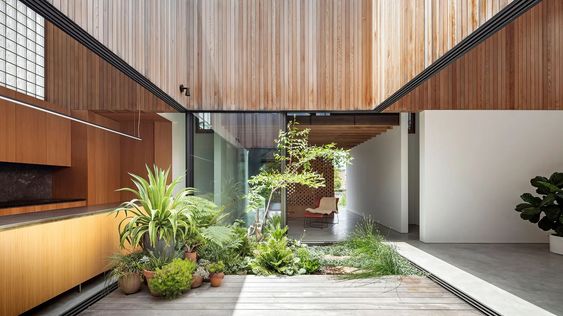Bringing the Beauty of Japan into Your Home: Incorporating Japanese Aesthetics in Interior Design
- Mary Ann Skaria
- Dec 26, 2023
- 2 min read
Updated: Feb 25, 2024

The beauty of Japanese design lies in its timeless aesthetic with sleek clean lines, clutter-free zones, top-notch craftsmanship, embracing simplicity, nature, and high quality materials. Geometric shapes, textures on natural materials, and a neutral color palette with dark contrasts contribute to its defining characteristics. But it's not just about looking good; Japanese design is the ultimate eco-friendly, quality-loving lifestyle. It's about turning your humble abode into a harmonious haven that stays effortlessly on point.
Here are a few ways to add the beauty of Japanese aesthetics to your home:
1. The beauty of Imperfection - Wabi Sabi
Choose vintage, reclaimed, or handmade items instead of mass-produced ones to appreciate the charm of imperfection, in line with the Wabi Sabi philosophy.
2. Natural Materials & Textures
Incorporate natural materials and textures, such as stone, paper, cotton, and rattan, seen in elements like Tatami Mats, Paper Lanterns, Wood paneling on ceilings and walls, Wood Floors, and simple furniture.
Yakisugi ( Shou Shugi Ban) is wall & ceiling cladding that is intensely burnt as a preservative heat treatment, creating a unique texture and rich dark patina to your interiors.
3. Neutral Color Palette
Utilize a neutral color palette, whether leaning towards darker tones with stones and dark wood or opting for nuanced whites, beiges & greiges that complements the surroundings
4. Geometric Shapes and Textures
Integrate geometric shapes, whether in furniture or decor, to add visual appeal.
Incorporate textures found in natural materials, like woven fibers or rough stone.
5. Connection to Nature
Bring the outdoors inside by emphasizing connections with nature through large windows, skylights, indoor-outdoor living spaces, and the inclusion of plants for a well-lit and natural environment.
6. Minimalism
Maintain organized, decluttered spaces by finding a designated home for every item, aligning with the principles of minimalism and a less-is-more mindset.
Embrace a modest lifestyle by avoiding excess and unnecessary elements.
Focus on functionality and purpose in each design choice.
7. Quality & Craftsmanship
Choose simple well made furnishings and accessories, emphasizing craftsmanship and functionality, such as teapots, books, ceramic cups, and vases, all in harmony with the interior finishes. Look for quality and bespoke craftsmanship to achieve aesthetic harmony with similar tones and textures.
8. Lighting Design
Use soft, natural light to create a warm and inviting atmosphere. Natural Lighting with large windows and Skylights is essential. Employ pendant lights, paper lanterns, or floor lamps with subtle designs.
9. Spa like Bathrooms
Apply the Japanese aesthetic to bathroom design by creating a spa-like atmosphere with ample natural light, a deep soaking tub, and textural wood elements, contributing to a serene and rejuvenating space.
All Image sources are linked
The key to Japanese interior design is finding a harmonious balance between simplicity, functionality, and a connection to nature. Each element should serve a purpose and contribute to a serene and comfortable living space.
Happy Designing!



































































Comments